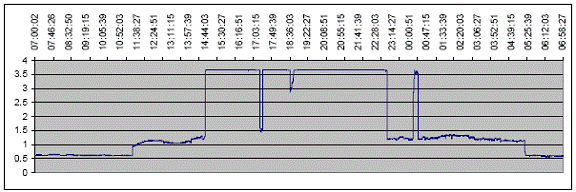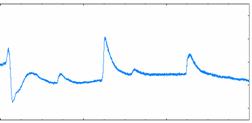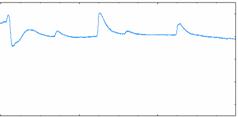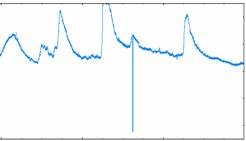Further Tips on Searching for Flares
Actual flares will generally yield data that agrees amongst different SID instruments monitoring the same transmitter. A possible “flare” on one NAA monitor’s data that does not appear on another NAA SID monitor could be due to electrical interference or other problems with that instrument. Consider these when searching for flares in SID space weather monitor data.1. The VLF transmitter stations go through on/off maintenance cycles. Unnaturally steep slopes or aberrant spikes in signal data may indicate that that SID monitor’s transmitter was being turned on or off at the time.

2. High gain on a signal can also cause the appearance of unnatural spikes or plateaus due to an electrical effect known as railing. Such behavior may indicate a poorly calibrated SID monitor.

3. Electrical Interference. Actual flares will yield data that agrees from different SID monitors using the same transmitter. A possible “flare” on one NAA monitor’s data that does not appear on another NAA SID monitor could be due to local interference. Local interference can be significant, here is data that should be flat affected by a vacuum cleaner operating within a few meters of the antenna.

4. A true solar flare will appear as a spike in the signal data, with a sharp upswing on the left and with a tail extending to the right. The data below from 26 April 2006 shows several identifiable flares observed by several monitors.




![]()